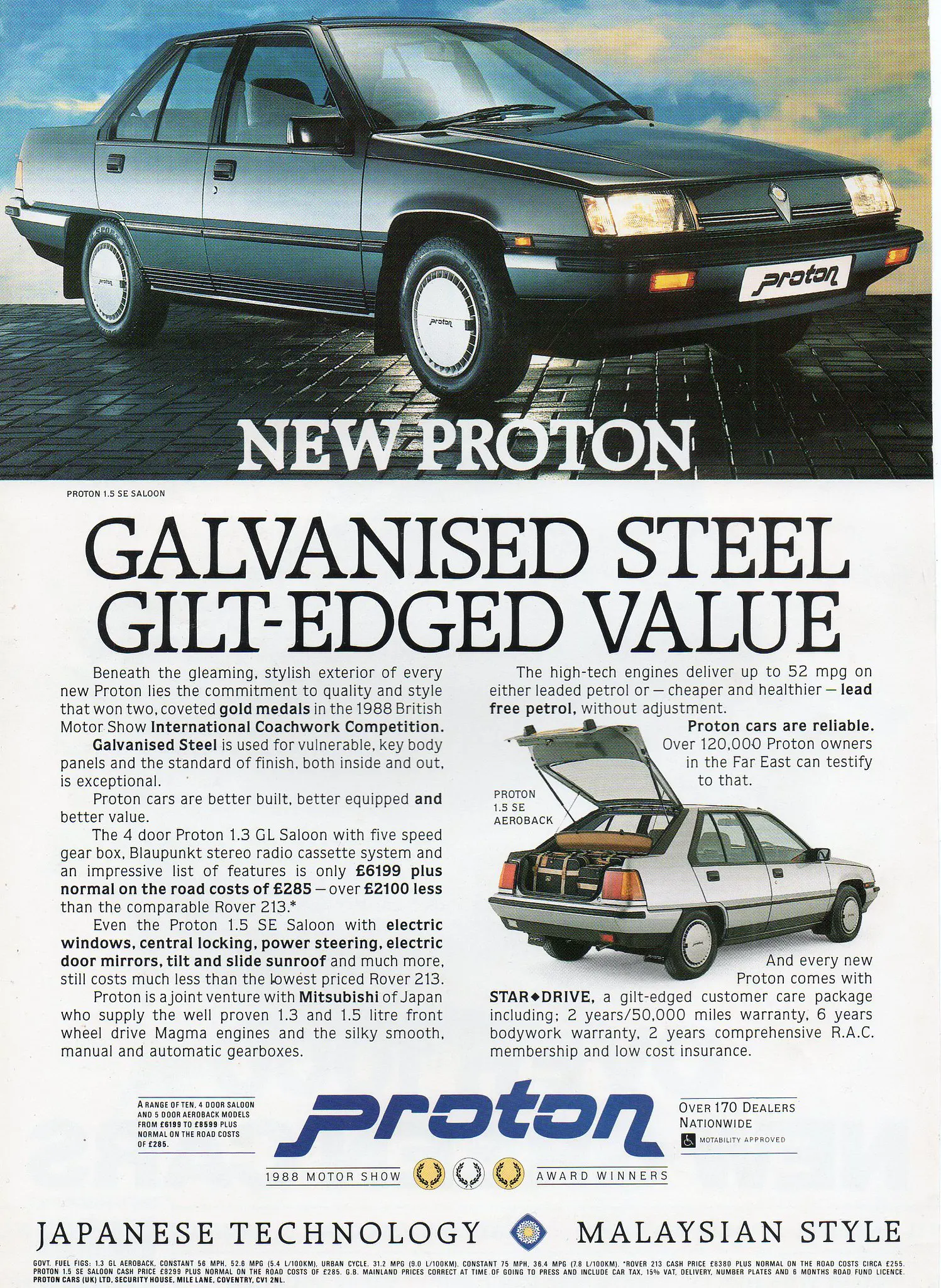DO YOU REMEMBER THE ORIGINAL PROTON?
08 November 2021
The 1988 Motor Show at the NEC marked the arrival of a new marque to British motorists, albeit one whose products resembled a 1983 Mitsubishi Lancer Fiore. Here was a car that promised “Japanese Technology, Malaysian Style”, at a very reasonable price.

The origins of Proton (Perusahaan Otomobil Nasional or ‘National Automobile Company’) date back to 1979 when the Malaysian government initiated a ‘National Car’ programme. Four years later, the company was formed as a joint venture with Mitsubishi, who provided 70% of the capital and took 30% of the equity and their first car, the Saga, debuted in September of 1985.
One aim of the Proton, according to the authorities, was to “accelerate the development of local components and stimulate the plastics, rubber, aluminium and metal industries”. It proved so popular that, by 1986, they held 66% of the domestic market, helped by the fact that the duties on imported CKD kits for local assembly were in the region of 15%.
By 1988 the company explored other RHD markets, starting with Ireland. Protons further underwent a 1,000-mile trial to evaluate its suitability for the UK. Later that year, John Simister tested the flagship 1.5SE (the firm never used the ‘Saga’ name in the UK) opposite the Rover 213, the Citroën BX 16 RS and the Toyota Corolla 1.3 GL for Autocar & Motor. He found the Proton to be “unexpectedly competent” and “the men at Kuala Lumpur should be proud of their first automotive effort”.
British sales commenced on the 16th March 1989, and ‘Proton UK’ was co-owned by Western Motor Holdings, who also imported Ladas. Dealers for the Soviet marque had the first refusal on the Malaysian car to establish their presence across the country. Motorists were offered a ten car line-up with a choice of 1.3 or 1.5-litre engines and four-door saloon or an ‘Aerodeck’ five-door bodywork. Proton hoped to sell an initial batch of 5,000 cars in a year; they achieved this target in just six months.
1990 saw the Proton gain Mitsubishi designed triple valve cylinder heads, which boosted performance and a modified fascia. At £8,990, 1.5SE had power steering, central locking, electric front windows, and a sliding roof, yet cost over £1,000 less than a Ford Escort 1.4GLX. Autocar & Motor found it to be “quiet and refined for most of the time, comfortable for long distances, well equipped and great value for money”.
The updated Saga Iswara (aka the ‘Mpi’ in the United Kingdom) made its bow in 1992, and surviving examples of the first generation Proton is worthy of great respect. It was a true “people’s car”, offering honest, dependable, and affordable transport, as illustrated in this very “late ‘eighties” advertisement:
Why choose Lancaster Insurance?
Here at Lancaster, we love classic cars as much as you do and we understand what it takes to protect them for future generations.
We have links with some of the top classic car clubs around the country and some of our policies even offer discounts of up to 25% for club members.
Other benefits of classic car insurance through Lancaster can include:
- Historic rally cover
- Static show cover
- Limited mileage discounts
- Choice of repairer
- 24-hour claims helpline
Give your classic the protection it deserves and get a quote for your classic today.
